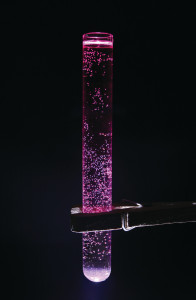The concluding part of an article in which Vilnis Vesma describes the hallmarks of bogus energy-saving products and how to resist sales pressure. In the previous issue I discussed five of the 10 hallmarks of a suspect product offering: failure to adhere to the known laws of science; implausible percentage savings claims; extreme ease of installation; being dismissive of established test methods or expertise; and analysis based on indirect measurements like reduced running hours.
I will now go on to discuss the other five hallmarks in greater depth but I need to reiterate that no single hallmark is sufficient proof; and some of them apply to perfectly genuine offerings. My suggestion is that you should look for, say, four or more of the 10.
The other hallmarks are:
6. Secret ingredients or principles of operation Claims based on secrets are, by their nature, hard to assess in principle, so secrecy is the perfect cloak for trickery. However, if you are looking for a way to deter a persistent salesman, you can use secrecy against them. Just fall back on a health and safety argument. Ask for toxicity and materials compatibility tests on any chemical constituents. And if somebody tries to sell you a magnetic device so powerful that it can affect oil or gas, ask for information about its effects on human tissue and body fluids.
7. Reliance on being patented as proof of effectiveness
Have a look and see where the product is patented (if indeed it really is – sometimes vendors lie). If it is patented in the UK, at least it is probably based on accepted scientific principles. If the product is only patented in other countries, it could be spurious because not all national patent offices are equally rigorous. And if the patent refers to secret or even unspecified materials or arrangements, you can be sure you are looking at a dud because the essence of a proper patent is that it discloses enough about the invention to enable somebody with relevant skills to reproduce it. It shows that it can be made, and how. It does not, however, imply (let alone prove) that it would work.
8. Heavy reliance on testimonials
I have to be careful here because good products are promoted on the basis of testimonials, too. On the whole, testimonials that are purely qualitative (“the installer came at the promised time and cleaned up thoroughly afterwards”) can be believed. Quantitative ones (“we saved 30% off our gas bills”) are weak. Very few end users have the measurement and verification skills necessary to make such a claim credible. Could I just thank the hostages who smuggled out the truth in their testimonials: “The savings were unbelievable.”
Fraudsters are canny. They can harvest true testimonials from cases where there are apparent savings while ignoring the cases where there was no effect or where consumption increased. And they can blackmail their customer: who wants their boss to learn that they would not endorse a product on which they had forked out a large amount of their employer’s money? In the 1990s one case was reported to me where employees of blue-chip companies were even offered “access payments” (bribes in other words) to show prospective customers their installations.
9. Literature plastered with ISO9001 and other certification logos
Sometimes it seems only the 25-yard swimming certificate has been left out. I have seen a product’s ranking in an obscure on-line popularity poll used to establish its credibility under the headline “It’s official!”
One of the things sometimes used to lend credibility is a reference to the International Performance Measurement and Verification Protocol (IPMVP). Just remember, though, that IPMVP cannot be used to validate a technology in general. It strictly covers the evaluation of a specific installation. Therefore any generic claim of savings based on IPMVP should be treated as misleading.
10. Dense academic research reports
Aware of the skepticism which greets their pseudo-scientific explanations of secret (and yet patented) technologies, vendors sometimes add scientific research reports to the mix. To add further weight, the reports’ authors are often professors and held out to be “world-leading” authorities. Sadly, these professors, if they exist, do not always check carefully what is published over their signatures, and the reports do not always stand up to independent scrutiny.
Antidotes
If four or more of the 10 hallmarks apply, you would be justified in saying “no” to a sales proposition on the grounds that you do not find it believable.
But what are you to do if you have a pushy salesman on one hand and a board member who has been nobbled by the vendor on the other?
The Advertising Standards Authority made a ruling against a company called Blue Carbon in relation to a so-called “current optimisation” device. The ASA took expert advice on its behalf, exposed flaws and contradictions in the company’s adverts, and instructed it to stop making energy-saving claims without holding substantiation for them.
If you feel suspicious about a product and the salesman won’t let go, you can contact the ASA and challenge whether the claims made for it in adverts (including web pages) can be substantiated. But maybe you don’t need to go that far.
Just show the salesman the ASA’s adjudication on Blue Carbon and ask them if they really want to take things further. I have provided a link to the case on my website: look for “bogus products” under “B” in the A to Z index.




